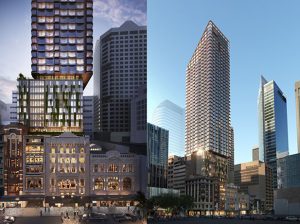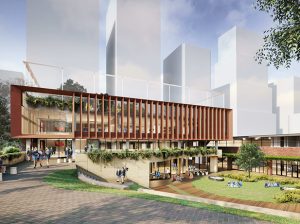NCC Section J Compliance
Section J of the National Construction Code (NCC) 2022, Volume 1 sets out provisions to increase the energy efficiency of all new and upgraded non-residential buildings, aiming to drive down net Green House Gas (GHG) emissions to align with national climate change and emission reduction targets.
Our Section J consultants can assist you with determining the best approach to NCC Section J compliance through the DTS or J1V3 performance solution.
If your project is targeting a NABERS Energy or Green Star rating, there are additional pathways to NCC Section J compliance should specific performance criteria be achieved.
All Performance Solution pathways require a thermal comfort level of Predicted Mean Vote (PMV) of +/- 1 for 98% of occupied hours to be achieved in 95% of zones within a development.
Our Services
Our Section J consultants provide Part J Deemed to Satisfy (DtS) & J1V3 Performance Solution assessments for all building types, including all verification methods contained in the NCC 2022.

- J1V1 – NABERS Energy compliance pathway available for the following building classes:
-
- Class 5 Offices;
- Class 2 Common Areas;
- Class 3 Hotels; &
- Class 6 Shopping Centre;
- J1V2 – Green Star Energy Compliance pathway available for projects targeting a certified Green Star rating;
- J1V3 – Verification using a reference building;
- J1V4 – Verification of Building Envelope Sealing;
- J1V5 – Verification using a reference building for a Class 2 Sole Occupancy Unit (all states except for NSW);
- Thermal Comfort (PMV) Simulations to comply with J1V1, J1V2 & J1V3;
- Statements of Expert Judgement;
- Deemed to Satisfy Assessments;
- Construction Certificate Statements;
- Occupation Certificate Sign Off.
Contact Aspire to discuss your project and determine the most appropriate pathway to achieve Section J compliance.
NCC 2022 Section J: Summary of Changes
There were significant changes introduced for Class 2 (residential) buildings, with minor amendments introduced for Classes 3-9 (non-residential). The main changes introduced are summarised below:
- Significant changes were introduced to Class 2 Sole Occupancy Units (SOU) & Class 4 buildings relating to insulation, glazing and services;
- There were minimal thermal requirement changes for Classes 3 & 5 to 9;
- Section J Performance requirements were expanded to include NABERS compliance pathways for a wider variety of building classes;
- J1V5 (Verification Using a Reference Building) introduced to assess Class 2 SOU’s (outside of NSW);
- New Electric Vehicle (EV) requirements apply to a variety of building classes, however adoption time for Class 2 in NSW depends on whether a Development Consent or CDC requires BASIX under v3.0 (current tool); &
- Class 2 SOU or Class 4 parts of buildings must achieve new BASIX (NSW)/Whole of Home requirements (outside of NSW) from 1st October 2023.
Our Section J consultants have experience across all project types; let us know how we can assist with your development.







